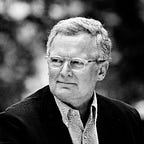Products as art and the manager as an artist
I attended The O’Reilly Next:Economy Conference in San Francisco last week as a speaker and a delegate.
As I listened to Yancey Strickler talk about “hardware as an artful medium” and the transformative values of Nick Hanauer’s presentation, a question came to my mind: is it now possible, or perhaps even necessary, to gain an ethical and aesthetic, rather than a logical-rational, understanding of organizational life? I heard people say at the conference: “We want this to be a beautiful organization for all those who work in it”. “I love what I am doing,” and “I love the people around me.”
The prevalent image conveyed by related conferences has been that organizations are made up of ideas, which meet and merge on the cognitive, rational level; innovations lacking emotions, aesthetics and sensations of beauty. Organizational theory and management studies had the conviction that aesthetics as a discipline has nothing to do with corporate life. This is still the case despite the legacy of Steve Jobs and Jony Ive or the much earlier work of Dieter Rams.
The scientific method set out to overcome fears of the unknown, the domain of creativity. The manager was the detached and objective observer, the rational human being. The neuroscientist Antonio Damasio argues that a person is only rational and detached when particular areas of the brain are damaged. Such people don’t show emotions, but neither can they select sensible actions from a list of alternatives they themselves have created. For normal people, thinking is paradoxically always rational and emotional — at the same time. Always!
Emotions and involvement merged with technology and rational thinking at the conference. As a result, there seemed to be a new vocabulary emerging; a language of aesthetics and involvement. At least this is my interpretation of the conversation between Tim O’Reilly and Ev Williams and how I heard Byron Auguste explain what he has set out to do.
In a way, one can claim that there is nothing new. Aesthetic considerations have often been of decisive importance. Apple products attract people in the same way that the theory of Einstein attracts scientists — by virtue of their sheer elegance.
Can it be that emotions and involvement are even more important than we have known?
Organizations are social constructs. They are nothing but constructs to which people are drawn in pursuit of some purpose. Healthy organizations are a concept of relationships to which people are drawn by beauty, values and meaning, along with the freedom to pursue them cooperatively. Healthy organizations enable more than they constrain. Unhealthy organizations are a concept of relationships into which people are forced by birth, necessity or manipulation. Unhealthy organizations constrain more than they enable.
The concept of the social organization intensified the debate in San Francisco as to whether competition or cooperation should rule in business. Is it going to be platforms or platform cooperatives? But competition and cooperation are not mutually contradictory. In the new design of work they don’t have opposite meanings. They need to be complementary. In every aspect of a healthy life we paradoxically do both at the same time. No successful social endeavour has existed without combining the two.
But often things don’t work out. The idea of cooperation was tarnished in socialism, leading to a deceptive pursuit of equality, and left us with totalitarian governments and tyrants enslaving their own citizens. As a result the political left lacks any convincing narrative in the post-industrial world. Competition has become absurd in capitalism, leading to mindless self-interest, a winner-take-all society, and has now left us to cope with the results of the irreversible exploitation of natural resources and the irresponsible abuse of people. Amazingly, people on the political right accept that greed is thought to be the dominant human motivation and financial markets mean gambling.
It was clear that instead of scaffolding the old dichotomy, we need a new, third alternative! To continue the search for the Next Economy after the Next:Economy Conference is one of the most important tasks for us. The work of creating the new designs of work is in the very beginning. But there are examples and there is hope.
The Internet era has proven that we are capable of working together competitively/cooperatively and building beautiful social communities that some time ago many would have dismissed as impossible dreams. It was evident at the event that we don’t yet have a good idea of what can or cannot be done by connected people. The search is on and the dialogue continues!
According to some speakers, changes in existing organizations and the evolution of new ones will have characteristics in common. Just as natural systems like the human body are not vertical hierarchies with each part superior to another in ascending linear order, neither will the organizations of the future be structured that way. Jeff Immelt assured us that this is not to say that all present industrial organizations are doomed, but the models we use to describe the world around us may well be.
We need a new vocabulary beyond the models of industrial production and the separatist, mechanistic concepts of a corporation. After listening to Reid Hoffman, I believe, he is one of the key people to follow on this topic. The emerging organizations cannot be portrayed in two dimensions on a traditional organizational chart. They are closer to the networked organization of neurons in the brain. But, even these dimensions are not enough without the aesthetic dimension of doing beautiful work. As one speaker put it: “Business is the context for doing interesting and beautiful things.”
The next challenge is to design a beautiful business. Products can be art and the manager can be an artist!
